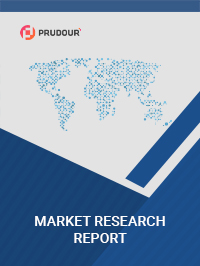
The Report named “Global Metal Heat Exchangers Market” serves crucial perceptions into global Metal Heat Exchangers industry along with newfangled industry details, currently dominating players in Metal Heat Exchangers, chapter wise analysis of each section and looming industry trends, which will guide the readers to target Metal Heat Exchangers market product Specifications and clients driving the long-term market revenue and profitability.
This report mainly focuses on Metal Heat Exchangers industry in the global market. This report primarily covers Metal Heat Exchangers market in North America, Metal Heat Exchangers market in Europe, Metal Heat Exchangers market in Middle East and Africa, Metal Heat Exchangers Market in Latin America and Asia Pacific. This report segregates the Metal Heat Exchangers market based on Type, Competitive Players, Regions and Application.
Alfa Laval
Kelvion (GEA)
SPX Corporation
IHI
Danfoss (Sondex)
SPX-Flow
DOOSAN
API
KNM
Funke
Xylem
Thermowave
Hisaka
SWEP
LARSEN & TOUBRO
Accessen
THT
Hitachi Zosen
LANPEC
Siping ViEX
Beichen
Lanzhou LS
Defon
Ormandy
FL-HTEP
Shell & Tube Heat Exchanger
Plate Heat Exchanger
Air Cooled Heat Exchanger
Petrochemical
Electric Power & Metallurgy
Shipbuilding Industry
Mechanical Industry
Central Heating
Food Industry
Metal Heat Exchangers Market: Regional/Counties Analysis
The market is spread across the globe which not only includes Metal Heat Exchangers market in Europe (Germany, France, Italy, Russia and UK), Metal Heat Exchangers market in North America (Canada, USA and Mexico) but also Metal Heat Exchangers market in Asia-Pacific(China, India, Korea and Japan). Now Metal Heat Exchangers industry is also spread in Middle East and Africa (Saudi Arabia, UAE, Egypt, Nigeria and South Africa)and Rest of the World. Use of advanced technology is constraining the Metal Heat Exchangers global market in North America. Europe will show a enormous elevation in the growth of global for Metal Heat Exchangers industry due to increased use of Metal Heat Exchangers in various fields. Asia Pacific countries such as China and India will show a enormous growth in the Metal Heat Exchangers global market due to rise in job opportunities.
Global Metal Heat Exchangers market report also includes Metal Heat Exchangers Market Business Overview. It also includes Metal Heat Exchangers Market by Applications and Type, Metal Heat Exchangers Revenue, Sales and Price and Metal Heat Exchangers Business Share. This report of Metal Heat Exchangers Market research also consists Global Metal Heat Exchangers Market Competition, by Metal Heat Exchangers market revenue of regions, sales and by Metal Heat Exchangers industry Competative Players, (2015-2020).
Report on (2021 Metal Heat Exchangers Market Report) mainly covers 15 Section and keenly display’s the global Metal Heat Exchangers market:
Chapter 1 describes Metal Heat Exchangers Introduction, product scope, Metal Heat Exchangers market overview, market opportunities, market driving force, market risk;
Chapter 2 analyzes the top competitive players of global Metal Heat Exchangers, with revenue, Metal Heat Exchangers industry sales, and price of Metal Heat Exchangers, in 2019 and 2020;
Chapter 3 displays the competitive situation of Metal Heat Exchangers among the top competitive players, with sales, revenue and market share in Metal Heat Exchangers Market in 2018 and 2019;
Chapter 4 shows the global Metal Heat Exchangers market by regions, with market sales, revenue and share of Metal Heat Exchangers, for each region, from 2016 to 2020;
Chapter 5, 6, 7, 8 and 9 analyzes the key regions, with revenue, sales, and market share of Metal Heat Exchangers market by key countries in these regions;
Chapter 10 and 11 shows the worldwide Metal Heat Exchangers market by type and application, with sales channel, Metal Heat Exchangers market share and growth rate by type, Metal Heat Exchangers industry application, from 2016 to 2020;
Chapter 12 includes global Metal Heat Exchangers market forecast, by regions, type and application, Metal Heat Exchangers with sales and revenue, from 2021 to 2031;
Chapter 13, 14 and 15 describes Metal Heat Exchangers distributors, dealers, Metal Heat Exchangers traders, sales channel, research findings and conclusion, appendix and data source.
Do Inquiry Before Accessing Report Here https://market.us/report/metal-heat-exchangers-market/#inquiry
”